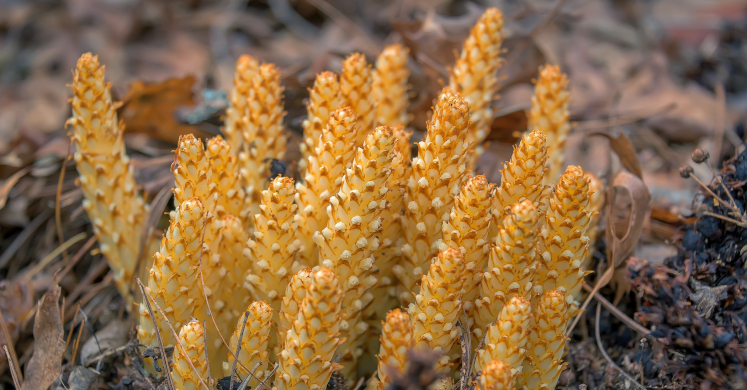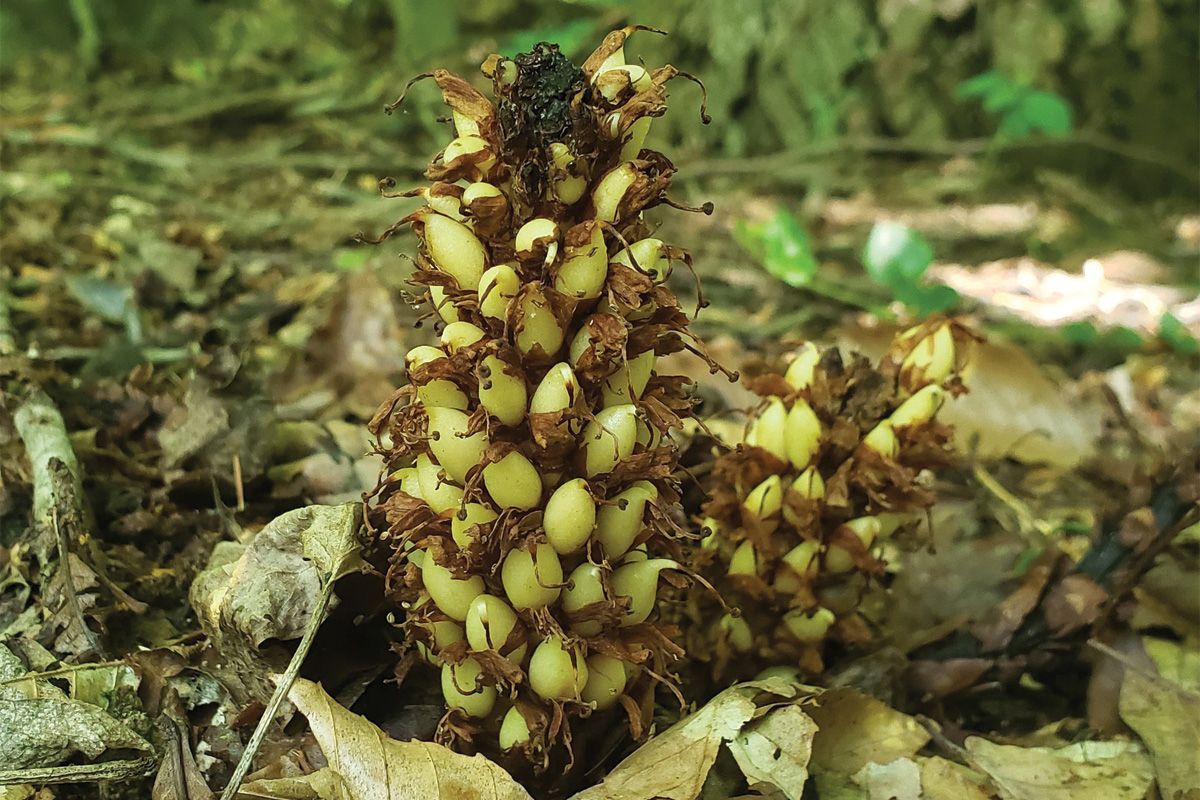Blog

#bioPGH Blog: Bear Corn
 A resource of Biophilia: Pittsburgh, #bioPGH is a weekly blog and social media series that aims to encourage both children and adults to reconnect with nature and enjoy what each of our distinctive seasons has to offer.
A resource of Biophilia: Pittsburgh, #bioPGH is a weekly blog and social media series that aims to encourage both children and adults to reconnect with nature and enjoy what each of our distinctive seasons has to offer.
What looks like a mushroom at first glance, then—no, it looks like a pinecone—but then, no not that either? You probably found bear corn! Bear corn (Conopholis americana), also called cancer root, is actually a perennial plant; but it’s a parasitic plant, so it lives a little differently than other plants. Let’s explore!
Similar to another parasitic plant that we talked about a few years ago, bear corn is a plant that is largely without chlorophyll because it is a parasitic plant – it doesn’t produce its own food. That’s why it has a rather ghostly pallor compared to the vivid green of other plants. Since it doesn’t photosynthesize, it doesn’t need large quantities of the green pigment chlorophyll, where photosynthesis takes place. Instead, bear corn is usually found in association with different species of oak trees. Instead of proper leaves, bear corn has brown or tan “scales” that grow from the fleshy stem.
In spite of its unique appearance, bear corn is still a flowering plant and produces fruit. The tiny flowers can start to emerge from behind the scales this time of year and attract some flies and bees in spite of not producing nectar. The flowers will later produce tiny fruits (which look like corn) filled with seeds. The plant is edible, though bitter to our palettes, and the fruit is eaten by several animals in our area, like deer and (fittingly) bears.

This week, I went on a quest to find some bear corn – which I did! – and along the way, I found quite a few other spring wonders. Come join me on a walk through Schenley Park!
Photo Credits: Cover, Ken Lane_CC BY-NC-SA 2.0 DEED

